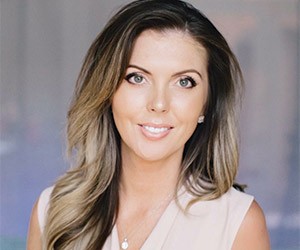Kate Patay, chief strategist of Patay Consulting, is an international speaker and consultant, SEPA Advisor and lecturer at The International School of Hospitality in Las Vegas. She’s been a recognized industry professional for nearly 20 years in many facets of special events and has served on the boards of numerous industry organizations.
One of Patay’s areas of expertise and frequent speaking topics is color psychology in branding and design. She spoke with Meetings Today on the importance of color and how it plays a role in branding and events.
Meetings Today: Why is color important to branding?
Kate Patay: Color is so important in branding because it’s truly your first impression. Color evokes emotion, so you want to have the right tone to properly convey your brand message. For instance, blues are a sign of trust, dependability, communication and strength, while red can be viewed as youthful, bold and exciting. Know what message you are sending when you create your brand.
MT: How can color affect and change the feeling and success of an event?
KP: Color affects events more than some may think, as choosing the wrong color can send an off-target message, or even offend, if used incorrectly. Colors are tied to religions, culture, political and even social influences, so understanding that as you plan is key.
A perfect example is the color white. In many Western cultures white is a pure tone and used frequently in events, but much of Eastern culture views it as a sign of mourning or loss, so you want to know your audience and tailor the event to their needs. A summer white party that is popular in the U.S. could be viewed as a funeral in other cultures.
Color can also affect an event when you have multiple sponsors or companies to recognize that all have competing colors that don’t complement the space or each other. Knowing how to find the right hues, and the neutrals to balance them, is paramount to your success with that event.
MT: What is trending now in color and design?
KP: One of the biggest trends right now is large-scale embellishments and patterns over sheer bases. All of the major designers are using large-scale floral in various hues with added texture, like velvet, for accents.
Silvers and traditional metals are leading the way with the rise of looks like machina (an industrial futuristic look) and winter garden (bold colors with soft, cool tones as the neutral base).
The fabulous part about design is there are no rules! Be bold, be unique, and tell a story with your event.
MT: How do you stay on top, or even ahead, of the trends?
KP: Staying ahead of the trends is a work in progress. Watching various media outlets, following fashion designers, keeping an eye on red carpets, seeing what is popular in home and garden, looking for restaurant trends that will affect event catering, monitoring tech advances, observing what influencers online are gravitating toward—there are so many things to keep track of!
It’s ever changing and you have to love it to stay so close to it. If not, find the people that do love it and surround yourself with them. I get more calls because someone would rather hire me to teach the upcoming trends than actually follow them themselves—and that’s okay! I’ve always surrounded myself with people that are pros at what they do and have strengths to complement where I may not be as strong.
MT: What are some of the mainstays to know about and keep in mind when thinking about color in design for events?
KP: The great thing with color and design in events—and some people will hate that I’m saying this—but we honestly have the luxury of trends lasting longer now because of social media. It’s a lot to keep up with, but think of how long people wanted to do black, gold and ivory Gatsby parties. Photos live forever on social media, so trends stay relevant much longer than in years past. Colors and prints that would have been a fad (a flash in the pan) 15 years ago are now sticking around for multiple seasons— like chevrons did.
You can never go wrong with classic colors, though. Navy, black, ivory, chocolate and white are “safe” and can bring a strong base to any event you are planning. When in doubt, err on the side of timeless and elegant, without appearing dated.



